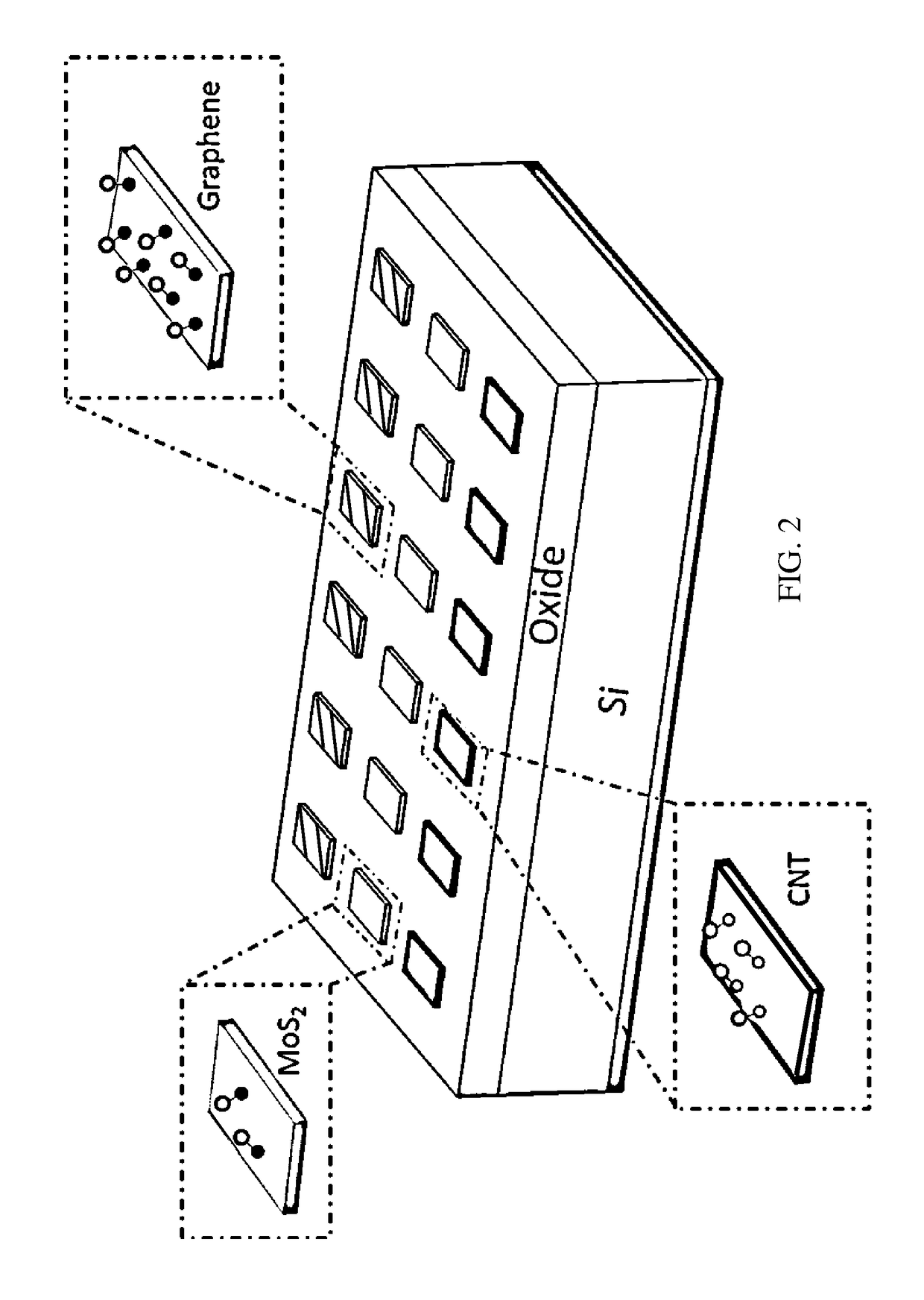Enhancing sensitivity by directly printing nanosensors using advanced manufacturing techniques on a pre-amp board or a daughterboard
a nanosensor and nanotechnology, applied in the field of enhancing the sensitivity of chemical sensors, can solve the problems of degrading the performance of optics in space, affecting the performance of optics of spacecraft, and affecting the performance of optical instruments, etc., to achieve high electrical conductivity, low noise, and high surface area
- Summary
- Abstract
- Description
- Claims
- Application Information
AI Technical Summary
Benefits of technology
Problems solved by technology
Method used
Image
Examples
Embodiment Construction
[0013]According to the present invention a chemical sensor assembly is provided that comprises a printed circuit board (PCB) and a two-dimensional ultrathin film chemical sensor structure. The PCB comprises at least a first pair of electrical leads and can have one or pairs of electrical leads or one or more arrays of pairs of electrical leads. The two-dimensional ultrathin film chemical sensor structure can be printed onto the printed circuit board using additive manufacturing or 3-D printing techniques, using a first chemical sensor material, for example, graphene. The first pair of electrical leads are electrically connected to the two-dimensional ultrathin film chemical sensor structure. A current can be run through the structure and a second pair of electrical leads can be used to sense increases and decreases in electrical resistivity across the structure.
[0014]The chemical sensor assembly can comprise a first array of chemical sensors. The two-dimensional ultrathin film chemi...
PUM
 Login to View More
Login to View More Abstract
Description
Claims
Application Information
 Login to View More
Login to View More - R&D
- Intellectual Property
- Life Sciences
- Materials
- Tech Scout
- Unparalleled Data Quality
- Higher Quality Content
- 60% Fewer Hallucinations
Browse by: Latest US Patents, China's latest patents, Technical Efficacy Thesaurus, Application Domain, Technology Topic, Popular Technical Reports.
© 2025 PatSnap. All rights reserved.Legal|Privacy policy|Modern Slavery Act Transparency Statement|Sitemap|About US| Contact US: help@patsnap.com



